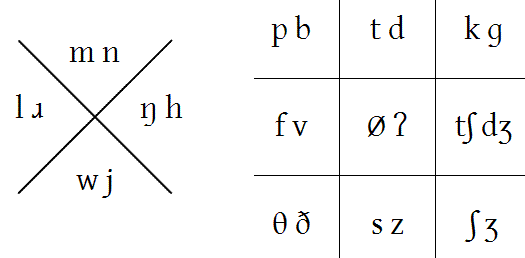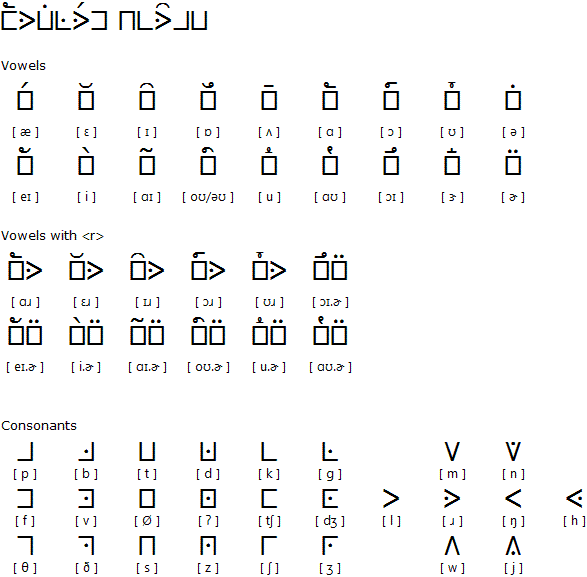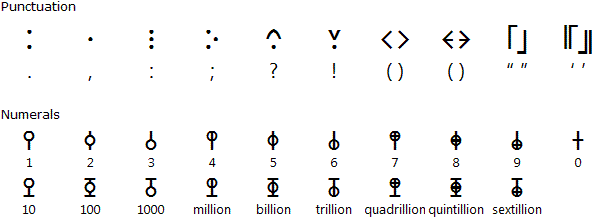Chartograph Script

Chartograph Script was invented by Charles Smith, whose inspiration came from
an episode of the cancelled Fox series Vanished. In it, a girl was taken
in for questioning by detectives. When she was taken home in a squad car, she held
her hand up to the window to show a message to the cameras, which detectives figured
out was a Masonic script. More info on the script can be found in this
image, and
here.
Essentially, there are two charts to this alphabet, one looking like a tic-tac-toe
board, the other looking like an X. Two letters are assigned to each spot, with one
letter getting a dot to distinguish it from the other assigned to the same slot.

Charles adapted this to a consonant alphabet, as he considered it a natural way to
represent voiced-voiceless pairs of obstruents. The idea of using letters for consonants
and diacritics for vowels came from many abjads and syllabic alphabets, but mostly Arabic
and Hebrew. The obstruents are contained on the tic-tac-toe board, with the sonorants on
the X-type board. For example, a backwards capital ‘L’ represents /p/, while putting a dot
in the middle represents /b/. As for the sonorants, Charles tried to pair sounds he thought
were related in some way, with the two liquids /l, r/ paired, two of the nasals /m, n/ paired,
the two semivowels /w, j/ paired and /N, h/ paired since they’re in complimentary distribution.
The vowel diacritics were inspired by abjads and syllabic alphabets from across the world,
again largely by Arabic.
The script is mainly suited for English; it can be used with either British or American
English, and probably other dialects as well. It could, in theory, be adapted to write other
languages, but Charles hasn’t done that to date. The name Chartograph was taken from the Greek
morpheme -graphy “writing” and the fact that the script (consonants, anyway) are laid out
in chart form.
Chartograph Script


Sample text

Translation
All human beings are born free and equal in dignity and rights. They
are endowed with reason and conscience and should act towards one another
in a spirit of brotherhood.
(Article 1 of the Universal Declaration of Human Rights)
